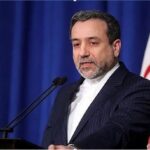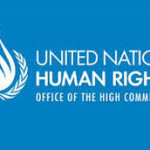
The Iranian economy is mired in a deep recession. The real or productive sector of the economy is paralyzed, largely by out-of-control (and often illicit) imports that have replaced domestic production. Rent seeking, corruption and the looting of national resources is pervasive. Both unemployment and inflation are extremely high. National currency is on the verge of collapse, and financial resources of the country are disproportionately invested in unproductive or parasitic activities such as buying and selling of precious metals, foreign currencies, real estate, and the like.
What factors or forces have contributed to this wretched state of Iran’s economy?
Two major sets of culprits account for most of the economic disaster in Iran: one external, the other internal. External factors consist largely of the U.S.-sponsored economic sanctions. Internal factors are rooted primarily in the appalling mismanagement of Iran’s economy. Debilitating mismanagement and lack of a guiding macroeconomic plan are, in turn, rooted in President Rouhani’s and his advisors’ economic outlook or philosophy. According to this philosophy, economic affairs must be delegated to the “invisible hand” of the market mechanism: there is no role or room for the government to intervene, monitor or guide the economy. This irresponsible, out-of-date, and out-of-place doctrine is succinctly epitomized in the old aphorism that “The best government is that which governs least.”
Since adverse effects of sanctions on Iran’s economy are relatively well-known, I would rather focus here on the destructive consequences of the Rouhani administration’s laissez faire, or hands-off, economic outlook—an ill-conceived outlook that has aggravated, intensified or multiplied the baleful effects of sanctions.
To be sure, the laissez faire economic outlook in Iran started around 1988 when the eight-year war between Iraq and Iran came to an end and the late Hashemi Rafsanjani rose to the presidency of the country. President Rafsanjani and his co-thinkers played a major role in Iran’s transition from the state-guided war economy to the economic model of neoliberalism. In pursuit of this fundamental transition, the president surrounded himself by a number of West/U.S-oriented neoliberal economists who established a “free market” think thank called “Institute of Planning and Management Education and Research.” The circle of like-minded economists who helped found and manage the institute came to be known as the Niavaran Circle, or Halgha-ye Niavara in Farsi. (Niavaran is the name of a district in Tehran where the think tank was established.) Relatively well-known founders and/or participants in the Niavaran think-thank included Messrs. Mohammad Nahavandian, Mohammad Bagher Nobakht, Masoud Nili, Abbas Akhondi, Bizhan Namdar Zangeneh, Masoud Karbasyan, Mohsen Noorbaksh, Mohammad Tabibian, and Mohammad Hosein Aadeli.
A glance at the roster of President Rouhani’s economic team shows that most of its members come from the Niavaran Circle of economists who, incidentally, also served as members of President Rafsanjani’s economic team. Niavaran “free market” think tank was officially directed by Mr. Hasan Rouhani, the current president of Iran, who was a loyal protégé of Mr. Rafsanjani and an avid proponents of neoliberal model of capitalism (reference).
Not only did Mr. Rafsanjani surround himself by liberal-neoliberal economic advisors, he also sought (and received) advice and expertise from the International Monetary Fund (IMF) to help his administration carry out a relatively extensive version of the IMF’s notorious Structural Adjustment Program (SAP). The IMF-sponsored Adjustment Program was instrumental to President Rafsanjani’s curtailment of Iran’s social and/or safety-net programs. It was also instrumental in the implementation of extensive (and often illicit) privatization schemes, as well as in the subsequent re-distribution of national income and other economic resources from the bottom up, that is, from the poor to the wealthy.
The abandonment of the war economy (and of the revolutionary socio-economic agenda in general) was accompanied by an extensive campaign to propagate the alleged benefits of laissez-faire economics, as well as to instill the principles or ethos of neoliberalism in the psyche of the Iranian people. These principles or presuppositions included the following:
1. Big government is always and everywhere wasteful and inefficient.
2. Government spending in favor of the poor and working classes leads to waste and inefficiency. It also leads to the moral hazard of nurturing laziness and dependency, that is, to gadaparvari(nurturing poverty), as Rafsanjani put it.
3. Free enterprise, unchecked business activities and market deregulation lead to efficiency and prosperity.
4. Free trade and integration into the U.S.-Western economics and financial markets are essential to economic development and social progress.
5. Abundant liquidity always and everywhere leads to inflation.
These laissez-faire ethos of neoliberalism, repeated ad-nauseam by the pundits and ideologues of neoliberal capitalism, are essentially specious presuppositions that are designed to justify curtailment of government-sponsored social and developmental programs. For example, these pundits routinely argue that government spending is the source of excess liquidity; excess liquidity is the source of inflation; therefore, government spending is the source of inflation. The policy conclusion of this argument is unmistakable: containment of inflation requires curtailment of government spending. It further follows that traditional public-sector social and developmental programs must be restricted, outsourced to the private sector, or privatized altogether. It is clear from these postulates and projections that neoliberal policy conclusions, which are essentially austerity prescriptions, follow not from real-world economic circumstances but from self-serving assumptions that are designed to reach the projected conclusions.
Contrary to neoliberals’ self-interested, spurious assumptions and their dubious policy conclusion, an abundance of liquidity does not necessarily lead to inflation. Whether it would lead to inflation or not is altogether a matter of economic policy: if it is used (invested) judiciously on social and developmental programs, it could lead to industrialization, economic development and social progress. Most of the core capitalist countries that were devastated by the Great Depression of the 1930s and, then, by World War II were rebuilt largely by virtue of government-sponsored money creation and deficit spending, that is, by (temporarily) creating excess liquidity and using it productively.
The experience of Germany is especially instructive in this respect: Evidence shows that while in this country the volume of money supply (liquidity) rose more than ten-fold in the 1948-54 period, this significant rise in liquidity not only did not lead to a rise in the level of prices but it was, in fact, accompanied by a decline in the general level of prices—the consumer price index declined from 112 to 110 during that period. Why? Because the increase in liquidity was accompanied by an even bigger increase in production, or output.
President Rouhani’s and his team of neoliberal economists’ argument that big government is necessarily synonymous with waste and inefficiency is, likewise, questionable. Even a cursory look at the history of economic development shows that most of  the currently developed capitalist countries used massive public-sector resources in the early stages of their industrialization for purposes of economic development. This history also shows that, as just mentioned in the previous paragraph, many of the countries that were devastated by the Great Depression and WW II were able to rebuild their shattered economies largely by virtue of extensive support provided by the big governments of the time.
the currently developed capitalist countries used massive public-sector resources in the early stages of their industrialization for purposes of economic development. This history also shows that, as just mentioned in the previous paragraph, many of the countries that were devastated by the Great Depression and WW II were able to rebuild their shattered economies largely by virtue of extensive support provided by the big governments of the time.
Although Rafsanjani’s liberal-neoliberal economic doctrine was somewhat tempered after he left the office, it was picked up (and, indeed, escalated) by his long-time co-thinker Mr. Hasan Rouhani when he ascended to Iran’s presidency in 1992. The laissez Faire, or hands-off, economic outlook of President Rouhani and his economic advisors, along with their belief that the salvation of Iran’s economy lies with its integration into Western/American economic and financial markets, have played an even more devastating role in precipitating Iran’s economic paralysis than economic sanctions imposed by the United States and its allies.
The Rouhani administration’s blind faith in the perceived magic of free enterprise explains why the administration lacks some badly-needed macroeconomic objectives, guidelines or policies. It also explains why the administration has no control over the nation’s money supply, its foreign exchange market, its financial system and institutions, its exports and imports, and the like. The hands-off economic doctrine, which is tantamount to shirking duty, or responsibility, in the face of mounting economic problems, is justified under the guise of the “sanctity” of private property and the “magic” of free enterprise. Neglect of the public-sector programs, both social services and developmental projects, is reflected in a drastic decline in the share of national budget that is allocated to such services and projects—from 22 percent of the national budget in 1991 to the currently less-than 10 percent.
This sense of irresponsibility and the wanton abandonment of many of the state-sponsored macroeconomic objectives lie at the core of most of the evils that have come to suffocate the Iranian economy and its people. Lack of macroeconomic objectives and guidelines, combined with a dire lack of accountability, have left the fate of economic activities to profiteers, rentiers, parasitic financial speculators, contraband importers, and outright economic mafias—mafias who are often connected to shadowy sources of power and high level corrupt officials (reference).
The Banking system, with active collaboration of the Central Bank of Iran (CBI), has become a vehicle for the transfer of economic/financial resources to the well-connected big financial speculators. Banking institutions grant huge sums of credit to powerful but faceless financial oligarchs, often under the guise of productive investment and job creation. These financial speculators, however, routinely invest the monies thus acquired in unproductive or parasitic enterprises such as buying and selling of precious metals, of foreign currencies, of real estate and the like. Furthermore, these financial gamblers rarely payback the cheap monies they have illicitly acquired from the banking system.
There is irrefutable evidence, reported daily by the national media outlets, that the Central Bank of Iran (CBI) has deliberately plundered its gold and foreign currency reserves. In early 2018 (or late 1396 of the Iranian calendar year), the bank announced the sale of 7,650,000 gold coins, which amounted to 62 tons of gold (each gold coin, called sekeh in Farsi, weighs nearly 8.2 grams of gold). Soon after the bank’s announcement of the sale of gold, its price began to escalate; it is now nearly four times what it was prior to the announcement of the sale. Although in theory the potential buyers had equal opportunities to buy the gold coins thus put up for sale, it soon became clear that, in practice, a small number of buyers had managed to appropriate the lion’s share of the coins. The lopsided sales distribution among the buyers, along with the skyrocketing price of gold soon after the sale announcement, have led to rampant rumors of collusive deals between the sellers (i.e. Central Bank authorities) and the big buyers.
The apparent justification of the looting of the national gold reserves was based on the flimsy notion that the injection of gold into the market could absorb the “over-abundance” of liquidity, thereby serving as a mechanism to temper inflation. Contrary to such a theoretical mumbo-jumbo, not only has the sale robbed Iran of its gold reserves, which is a huge crime committed against national interests, it has also created a highly active, indeed feverish, black market in gold (reference).
Another equally scandalous policy of the central bank authorities has been the looting of the nation’s foreign currency reserves. Around the same time that the bank put up 62 tons of its gold reserves for sale, President Rouhani’s most influential vice president, Eshaq Jahangiri, announced that henceforth the central bank would sell the U.S. dollar to anyone interested at a fixed rate of 42,000 rials per dollar. Although one of the ostensible purposes of Jahangiri’s announcement was to import essential consumer goods at a relatively reasonable fixed exchange rate in order to control price inflation, in reality the major bulk of the dollars thus supplied by the bank was purchased by big financial speculators and importers of luxury products.
Like the case of the sale of gold coins, the price of the dollar began to escalate soon after Jahangiri’s announcement of the sale of dollars. It has since skyrocketed to nearly five times the original price of 42,000 rials. The net results of this policy have been (a) the hollowing out of Iran’s foreign currency reserves to the tune of tens of billion dollars; (b) the insane self-enrichment of financial speculators; (c) the hoarding of the illicitly-imported products; and, therefore, (d) further escalation of price inflation. Again, like the case of the sale of gold coins, rumors are flying around among the Iranian people that there may have been dubious or collusive deals between the sellers and buyers of dollars at the original fixed rate of 42,000 rials (reference).
This is all reminiscent of the looting of the Russian economy under Boris Yeltsin. Following the collapse of the Soviet Union and the rise of Boris Yeltsin to the presidency of the Russia, a cabal of bureau-technocratic profiteers in and around the Yeltsin administration, in collusion with a well-orchestrated foreign partners-in-crime, including the CIA operatives and academic financial experts from Harvard University and the International Monetary Fund (IMF), rapaciously privatized Russia’s massive public properties of the Soviet era at fire-sale prices, thereby handsomely enriching themselves at the expense of the Russian people—hence, the nearly overnight emergence of the notorious Russian billionaire oligarchs. The robbery included the theft and transport of 2600 tons of the Russian gold reserves out of the country (reference).
The looting of the Iran’s riches and resources under President Rouhani may not be as appalling as the case of Yeltsin’s Russia, it is appaling enough. In a real sense, President Rouhani can reasonably be called the Boris Yeltsin of Iran (reference). He is so deeply in the grip of liberal-neoliberal economic doctrine that he dismisses critics of his hands-off economic policies as opponents of free enterprise, or proponents of statist/command economics, who do not understand the magic of the “invisible hand” of the market mechanism, or the “advantages” of integrating the Iranian economy into the American/Western economic and financial system.
This economic outlook is clearly reflected in his book, National Security and Economic System of Iran[امنیت ملّی و نظام اقتصادی ایران](2010). The book is written in collaboration with a group of like-minded economists who served earlier as economic advisors of the late President Rafsanjani and now serve as his own economic advisors and members of his cabinet. Although the authors claim that the book is written from a “Neo-Keynesian” perspective, in reality it is a confused and eclectic amalgamation of perspectives whose primary purpose is to systematically move the Iranian economy away from the pattern of a guided capitalism and welfare state to that of laissez-faire capitalism and a hands-off, or unresponsive, government. This agenda include privatization of public properties and resources, deregulation of market or business activities, reduction of government-sponsored social and developmental programs, minimization of protection of domestic industries and, by the same token, encouragement of importation of foreign products into national markets.
This hands-off attitude has played havoc on Iran’s economic and foreign policies under the Rouhani administration. Economically, the administration’s misguided outward- or Westward-looking view has led to a regrettable neglect or rejection of inward-looking economic perspectives that call for taking advantage of economic sanctions, relying on domestic talents and resource in order to become self-sufficient by producing as many of the consumer goods and other industrial products as possible. Indeed, prior to the rise of Mr. Rouhani to presidency Iran made considerable progress in scientific research, technological know-how and manufacturing industriesby following, more or less, the philosophy of resistance economics, or the inward-looking policy of industrialization.
Not only has the debilitating outward-looking mentality, which maintains that Iran’s economic development dependents on Western capital and economic relations (in effect, making national economic development hostage to the mercy of Western powers), crippled Iran’s economy, it has also turned its foreign policy into a policy of compliance with imperialistic demands of the United States and its allies. The U.S. and its allies have correctly viewed this mentality as a weakness or lack of resolve on the part of the Rouhani administration to resist their one-sided, selfish demands. Not surprisingly, they successfully took advantage of this soft, submissive, or pleading attitude during the so-called nuclear negotiations, thereby achieving all their objectives of the negotiations—reducing Iran’s technological capability of producing 20 percent enriched uranium to 3.5 percent, taking out of service some 14000 of its advanced (IR-M2) centrifuges for enrichment, pouring concrete into the heavy-water reactor in Arak, transporting most of its enriched uranium abroad, and obtaining Iran’s consent to highly intrusive IAEA (International Atomic Energy Agency) inspections of its research facilities—without an appreciable reciprocity in terms of sanctions relief.
The zeal or enthusiasm to be included in the financial/economic orbit of the core capitalist powers of the West also explains why, having effectively crippled its nuclear technology, these powers are now making additional imperialistic demands of Iran—demands and provocations that are tantamount to trampling upon Iran’s right to national sovereignty. Such demands, as frequently voiced by President Trump and his Secretary of State Pompeo, include the following:
+ Stop uranium enrichment altogether, never pursue plutonium reprocessing, and provide the IAEA with unqualified access to all sites throughout the entire country.
+ Drastically curtail its defense capabilities, especially its missiles technology.
+ End support to resistance organizations, which they call “terrorist” groups, in the region.
+ “End its threatening behavior against its neighbors, many of whom are US allies.”
+ “Respect the sovereignty of the Iraqi government and permit the disarming, demobilization and reintegration of Shia militias.”
+ “Withdraw all forces under Iran’s command throughout the entirety of Syria” (reference).
Provocations and illegitimate/illegal demands of this sort will continue until Iran’s only option is surrender or war. However, Iran could avert those undesirable outcomes if it changes course of its own. Such a proactive change of course or direction would require, first and foremost, a clear-cut liberation of its economic policies from the grip of its foreign policy. Ever since the rise of Mr. Rouhani to its presidency, Iran’s economic policies have been made subordinate—indeed, hostage—to its West-centric foreign policy. The apparent rationale behind this bizarre strategy is a misguided perception that makes Iran’s economic development dependent on its integration into Western economic/financial markets. This explains why the administration has wasted most of its time in office on the so-called nuclear negotiation with Western powers. By thus placing all its economic eggs in the basket of a misguided foreign policy, the administration has played havoc on Iran’s economy. The sooner this disastrous policy is changed, the better. To be effective, the urgently needed change requires a drastic shift away from the current West-centric, hands-off austerity economic model of neoliberalism to that of a guided, resistance, or war economy. (In a follow-up to this essay, I shall explain why such a drastic change of course is necessary, and why it would very likely be beyond the ability and the willingness of the current administration.)
counterpunch.org












 Posted in
Posted in 











